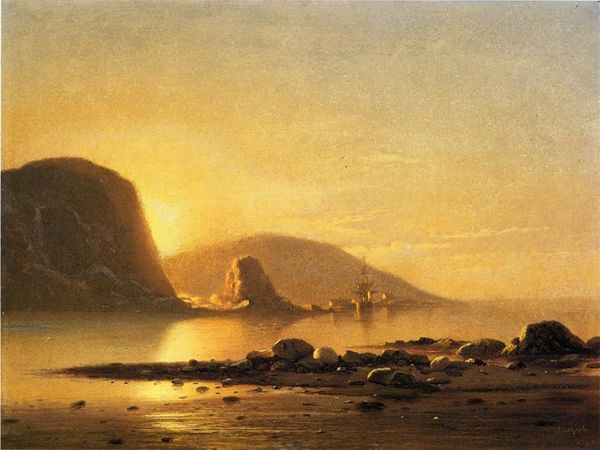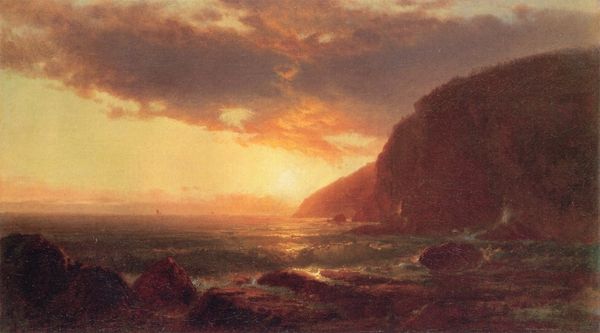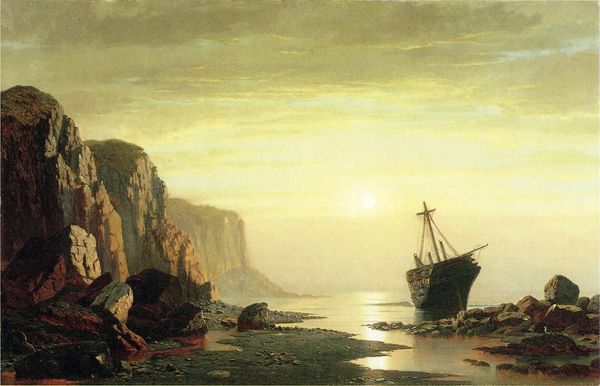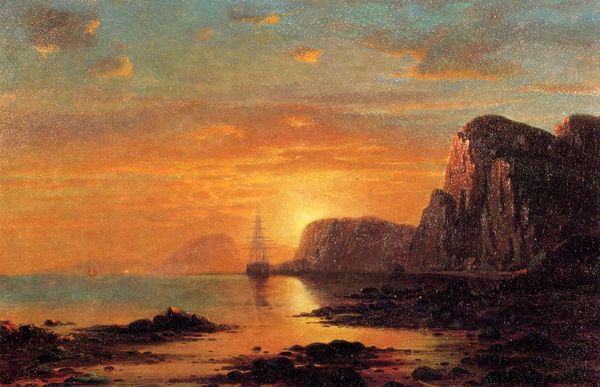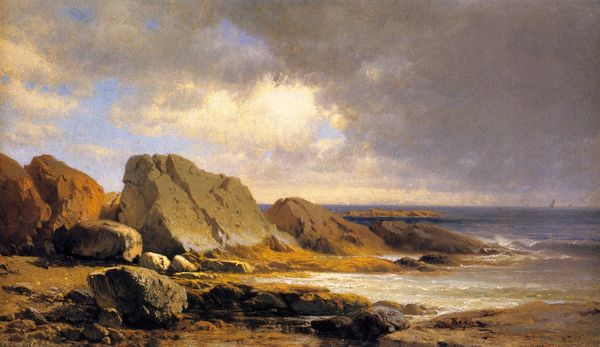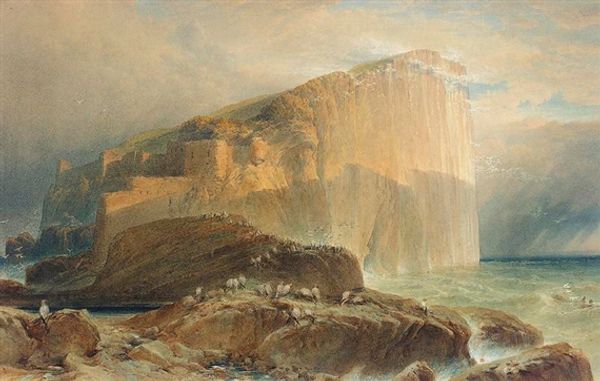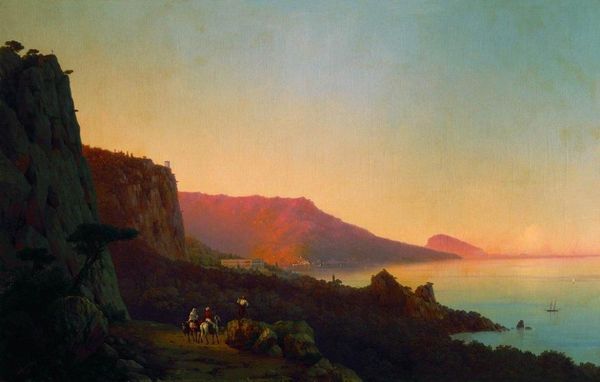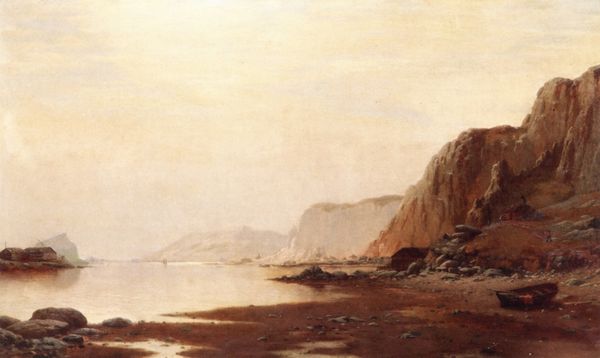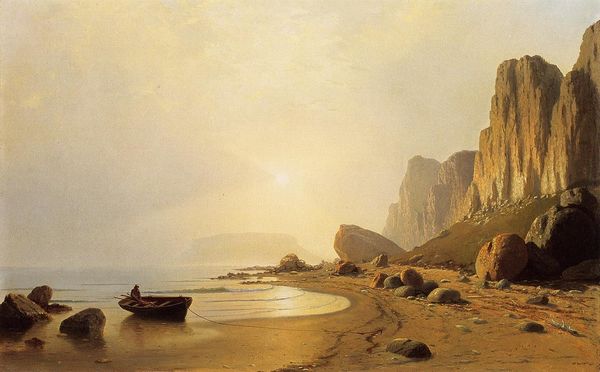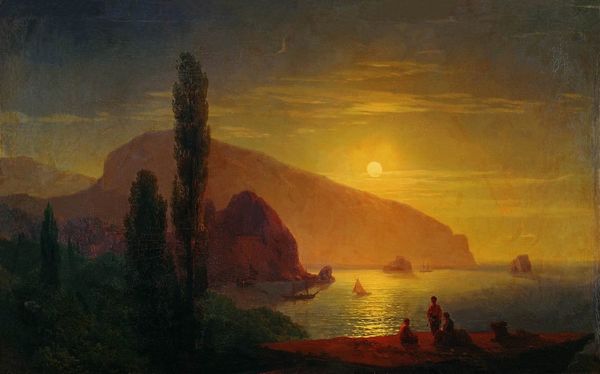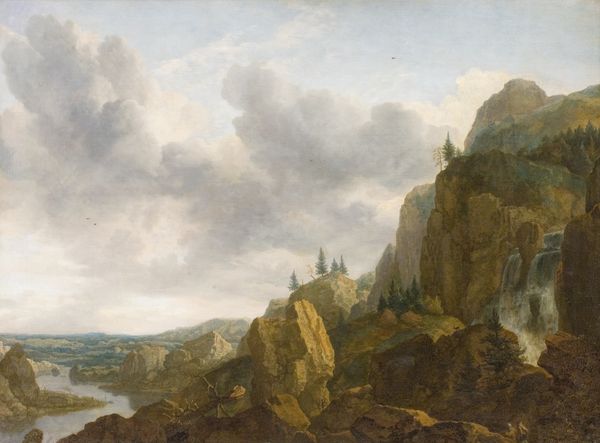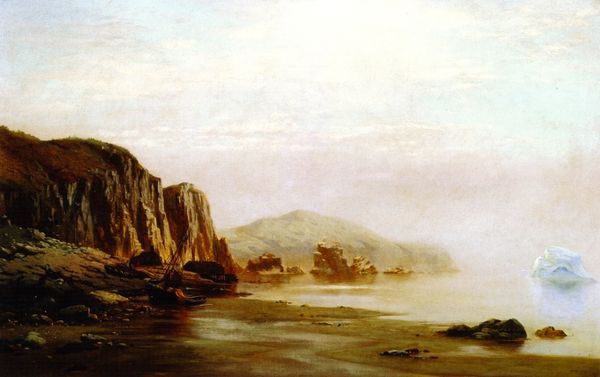
Copyright: Public domain
William Hart painted *Rocky Coast at Sunset* during the late 19th century, a period when American artists were increasingly turning to their own landscapes for inspiration. Hart, an immigrant from Scotland, built his career on romanticized visions of the American landscape. Here, we see a tranquil coastal scene bathed in the warm glow of the setting sun. The figures on the beach appear small, almost dwarfed by the grandeur of nature. What does it mean to create a landscape painting during a period of rapid industrialization and westward expansion? The sublime, a concept deeply embedded in 19th-century art, sought to evoke feelings of awe and insignificance in the face of nature's power. Hart's painting participates in this tradition, inviting viewers to contemplate their relationship with the natural world. But it also subtly reinforces the idea of American exceptionalism, suggesting that this land is not just beautiful, but also a source of national identity and pride. How might this idealized vision mask the realities of dispossession and environmental exploitation?
Comments
No comments
Be the first to comment and join the conversation on the ultimate creative platform.
